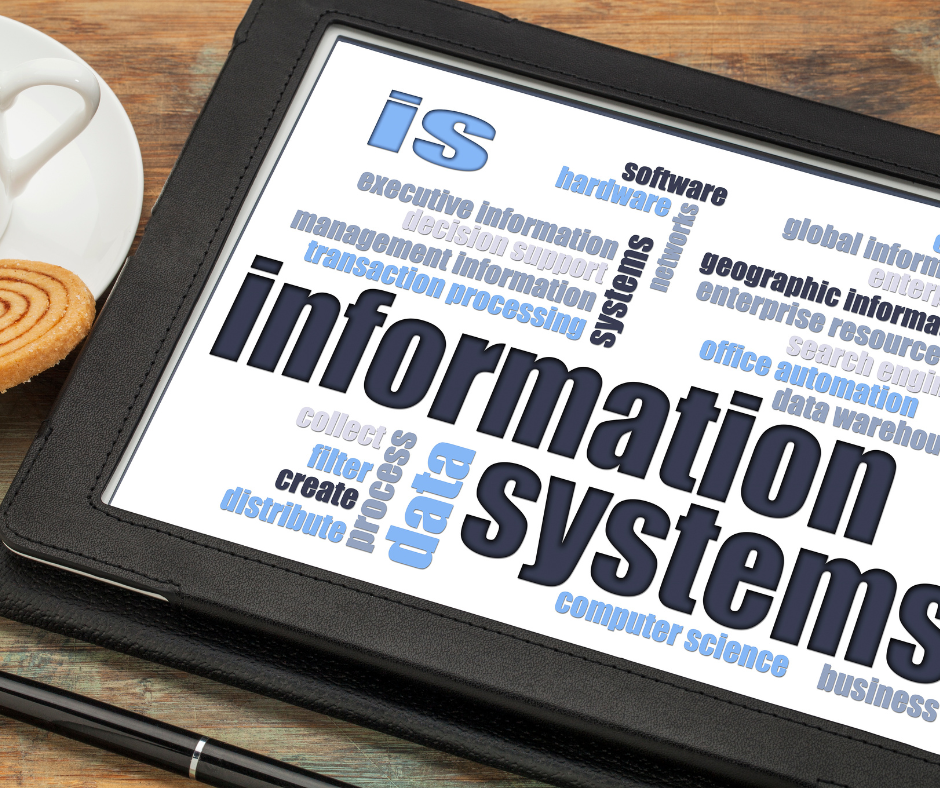
Key Takeaway:
- Employee handbooks are essential for information companies as they provide clear guidelines on various aspects of the company, such as mission and values, code of conduct and ethics, working hours and benefits, workplace policies and procedures, performance management and employee discipline. This helps to ensure consistency, reduce misunderstandings, and create a positive impression about what the company stands for.
- A comprehensive employee handbook can greatly improve employee engagement. It should be developed based on a clear scope and purpose, with input from key stakeholders. It should be reviewed and updated regularly to ensure it remains up-to-date and effective. Strategies for effective implementation include conducting orientation and training sessions for employees, ensuring consistent application and enforcement of policies, and regularly reviewing the handbook for tips on how to grow employee engagement with a great employee handbook.
- An effective employee handbook can help to improve employee satisfaction, engagement, and retention. It provides employees with a sense of clarity and security in their roles, which in turn can lead to increased productivity, better job performance, and a stronger sense of loyalty to the company.
Do you want to keep your information company’s employees informed and up-to-date? An employee handbook can help you do just that! Learn how to create a comprehensive yet concise handbook, and ensure your staff is up-to-speed with company policies.

Importance of Employee Handbooks
Employee Handbooks: Essential for Information Companies
Employee handbooks are an essential tool for information companies to establish clear expectations and guidelines for their employees. These handbooks provide valuable information about the company’s policies, procedures, benefits, and code of conduct, helping employees understand their rights and responsibilities in the workplace.
Employee Handbooks: Benefits for Information Companies
Information companies primarily deal with data and technology, where a single misstep can cause significant damage to the organization’s reputation. Employee handbooks outline specific protocols for handling sensitive information, cybersecurity, and technology usage. They also address workplace safety measures and provide guidance on avoiding any potential legal issues. In addition, these handbooks reinforce the company’s culture and values, promoting a sense of unity among employees and fostering a more productive work environment. Furthermore, it assists HR teams by providing a clear framework for addressing employee grievances, conflicts and issuing disciplinary actions if needed. A study by the Society for Human Resource Management states that more than 90% of organizations have a well-documented employee handbook in place. It is essential to customize the handbook based on the company’s unique needs, industry regulations, and legal compliance, addressing all information gaps that could potentially harm the company’s growth.
Employee handbooks provide a comprehensive guide for employees to navigate their way in the workplace, which eventually benefits the organization’s growth and development.

Key Elements of a Comprehensive Employee Handbook
Attend to the key components of your employee handbook to build a comprehensive one for your info business. Showcase your company’s purpose and standards. Establish a code of ethics and conduct. Describe working hours and benefits. Explain policies and processes. Also, performance management and employee discipline policies can guarantee a great work atmosphere.
Company Mission and Values
The guiding principles that define and shape a company’s culture are documented in the handbook. This essential document conveys the “identity” of the organization, including its values, philosophy, and mission. Employees can better align with and understand their roles within the company by understanding these core elements. A comprehensive employee manual should create a sense of purpose that motivates staff to perform at their highest level by clearly outlining the company’s mission and values. Defining core values establishes clear expectations for behavior at work, fosters collaboration, and helps build trust among colleagues. Values are typically summarized as short-worded declarations that embody what is important to the organization. To truly embrace the power of a mission statement, it must be more than just jargon or buzzwords on paper; it should reflect an organization s overarching objectives and goals. A good articulation will excite people both inside and outside of your company about what you stand for, creating a shared identity across all stakeholders. Pro Tip: Be authentic when writing about your company’s mission and values. Use anecdotes or stories to illustrate how these principles have played out in practice rather than just listing statements from a template. Because stealing office supplies is not a viable retirement plan, let’s take a look at the ethics and conduct guidelines.
Code of Conduct and Ethics
Maintaining a positive workplace culture and ethical behavior is crucial for any organization. Introducing a set of principles and guidelines using a Semantic NLP variation of ‘Code of Conduct and Ethics’ is essential to establish standards that align with the company’s values. This ensures that employees are aware of appropriate behaviors while at work, especially in sensitive circumstances.
A comprehensive employee handbook should detail the types of behavior that are deemed unacceptable, as well as present potential consequences for misconduct, upholding ethical actions towards clients, colleagues, and stakeholders. Some companies may also outline any obligations that staff have outside their job responsibilities, such as safeguarding confidential information or participating in pro-bono activities. In any business dealing with sensitive information, it is important to institute security policies such as passwords or encryption methods that guard against cyber attacks. Failure to comply with these measures can lead to punishment such as termination and even legal action if confidential data is breached. According to Forbes magazine in 2019, over 20% of data breaches are caused by human error or negligence rather than hacking attacks like malware or ransomware. Therefore, it’s important to have an employee handbook that outlines your company’s policies and procedures. This will ensure all employees understand their duties towards privacy protection and other important company matters. Who needs a work-life balance when you can have a never-ending stream of emails and a non-existent HR department?
Working Hours and Benefits
Employees need a clear understanding of their work expectations and benefits provided by the company. A comprehensive document outlining work hours, leave policies, and perks is essential for building trust between employers and employees.
Employers should specify the daily hours of operation, including start/end times, lunch breaks, and overtime policies. Benefits like paid time off, health insurance plans, retirement savings accounts, and other incentives should also be detailed in the employee handbook. Additionally, this section should cover sick days or emergency leaves.
To avoid misunderstandings about vacations or other paid leaves requests frequently asked questions can be listed here. This will help employees navigate complex HR policies and minimize disruptions to workflow. Pro Tip: Clarity and transparency are crucial when it comes to issues surrounding working hours and benefits. An up-to-date employee handbook can ensure everyone has accessible information about entitlements helping create a productive workplace culture with positive morale. Because let’s face it, without workplace policies and procedures, your office would be one big game of improv.
Workplace Policies and Procedures
The guidelines for conduct and methods of operation to ensure employee behavior aligns with company objectives are included in the Employee Conduct and Operations Guidelines. The guidelines must be understood by all employees, to maintain a positive work environment. An Employee Handbook is incomplete without Workplace Policies and Procedures. It includes company rules for attendance, performance expectations, anti-discrimination policy, dress code policy, conflict resolution, social media use policy, benefits details where necessary etc. It is crucial to specify disciplinary actions for violation of policies within the guidelines to discourage unethical practices. Employees should be empowered to follow proper protocols in case of emergencies or situations that require immediate attention. Check out these five tips for creating the best employee handbook for information companies to ensure your guidelines are effective. Pro Tip: Regularly updating workplace policies can boost productivity and avoid legal disputes. Performance management is like a game of Jenga, but with employees instead of blocks.
Performance Management and Employee Discipline
The harmonious co-existence of employees in the Information industry is crucial. Therefore, it is vital to have a well-constructed performance evaluation and worker sanctions system that meets legal requirements while fostering a favorable working environment. With an employee manual, this should be achieved through clear communication regarding presumptions for staff conduct, performance expectations, complaint procedures, an open-door policy as well as periodic feedback sessions and training opportunities.
Performance management systems are used to evaluate the productivity levels of employees and offer relevant support and resources for development while taking proactive measures to address areas needing improvement. Participant input can also contribute to adjustments made on both individual and organizational targets. Should disciplinary action become necessary, a fair discipline procedure should be followed in line with regional regulatory standards concerning corrective measures taken.
To enhance employee engagement and prevent legal disputes arising from inappropriate actions, companies must establish comprehensive policies that outline appropriate grounds for which disciplinary action will be enforced – ranging from minor lapses such as lateness to serious violations such as fraud – granted due process. According to a survey by XpertHR USA in 2019 involving 540 HR professionals on employee handbooks; 67% of employers included details within their handbooks relating to programs aimed at boosting workforce engagement.
Creating an online employee handbook is like assembling IKEA furniture – it requires patience, attention to detail, and a lot of swearing.

Strategies for Developing an Effective Employee Handbook
Crafting a powerful employee handbook for info firms? Here’s the strategy:
- Decide scope and goal of the handbook.
- Collect relevant data and sources.
- Create the handbook and get feedback from key players.
- Make necessary changes and finalize.
Determine the Scope and Purpose of the Handbook
Determining the purpose and scope of an employee handbook is crucial in its development. Clearly defining the intended audience and contents of the handbook can help create a precise and effective manual that conveys all necessary information to employees. The handbook should include company guidelines, policies, benefits, and expectations for employee behavior. To determine the purpose and scope of an employee handbook for information companies, it’s important to consider what policies are necessary for inclusion, such as data privacy or security regulations. A thorough assessment of the target audience and their needs is essential to ensure all relevant information is included. Additionally, identifying potential legal or regulatory requirements can ensure compliance while also protecting both employees and employers from liability. The handbook’s purpose should be to clearly communicate the organization’s values, goals, rules, expectations, benefits, policies by creating a user-friendly resource that helps employees understand their roles. Learn more about creating effective employee handbooks to keep your employees engaged and informed in the information industry. In crafting handbooks for information companies in particular – It’s worth remembering how much communication plays into any onboard documents you develop – especially when dealing with tech-savvy industries where individuals tend to consume more information online than they do offline. If you have top 5 questions about employee handbooks, they are answered here. In summary, determining the scope and purpose of an employee handbook requires careful consideration of company policies and the intended readership. Being mindful about valuable content details like legal/regulatory compliance will provide essential knowledge about your firm culture & a preview about expectations going forward. Get all the facts straight and gather your resources, because nothing says ‘professional’ like a well-researched employee handbook.
Gather Necessary Information and Resources
To ensure that an employee handbook is effective, it is imperative to collect essential data and resources for its development. Without adequate knowledge, the success of an employee handbook may be compromised. Here is a 4-step guide to help gather necessary information and resources for an employee handbook:
- Identify the relevant stakeholders in the company who can provide valuable insights. These may include department heads, human resources personnel, legal and compliance team members, and senior management.
- Gather any existing documentation such as company policies, codes of conduct, and procedures.
- Research current laws and regulations that apply to the industry, including federal and state employment laws.
- Consider industry best practices by reviewing other companies Employee handbooks are essential for providing guidance in information companies. It is crucial to ensure that all collected data is accurate, up-to-date, and compliant with applicable laws and regulations. In doing so, effective communication channels can be developed between employees & employers. Check out the best employee handbook for small business checklist for a comprehensive guide on creating an effective handbook. It would be ideal not only to arise with any handbook but track amendments specific to your company’s needs every time new legislation emerges. A company without an updated or designed handbook has found themselves encountering legal issues for merely being ignorant of what rules surround recording staff hours worked. Employee handbooks dictate how all employees handle tasks while in office space or remote work environment which keeps everyone accountable for their actions therein safeguarding Investors interests accordingly. Don’t just send your handbook for feedback, send it with a disclaimer: ‘Please consult a lawyer before attempting to sue us for anything in here.’
Draft the Handbook and Obtain Feedback from Key Stakeholders
Creating an effective employee handbook involves drafting the document and receiving input from important stakeholders. To ensure the success of this process, consider the following steps:
- Brainstorm and draft a rough outline of the employee handbook.
- Solicit feedback from key stakeholders, such as managers, HR representatives, and employees.
- Revise the handbook based on feedback received.
- Distribute the final version to all employees and set up a system for periodic revisions and updates.
It’s important to know what to include in an employee handbook and to also solicit feedback from key stakeholders, such as managers, HR representatives, and employees.
It is important to remember that obtaining feedback from various stakeholders ensures that the employee handbook reflects relevant information for everyone in your organization. Additionally, involving stakeholders in the development process can boost engagement and increase buy-in from your team. Pro Tip: Assign a point person or team responsible for maintaining and updating your employee handbook regularly to ensure its continued relevance. Putting the ‘final’ in ‘finalize’ is like trying to find the end of a never-ending PowerPoint presentation.
Revise and Finalize the Handbook
After incorporating feedback from employees and management, the employee handbook must undergo revision to ensure complete accuracy. Once an error-free document is attained, it is then ready for finalization. During this stage, legal consultants should review the handbook to ensure compliance with federal and state labor laws as well as industry standards. After approval, the handbook must be disseminated among all employees to provide them with clarity on company policies and procedures. It is important to note that in addition to being an informative tool, the employee handbook can serve as a legal safeguard for the company. Therefore, careful observation of updates in labor laws over time becomes necessary.
Pro Tip: It is crucial to maintain transparency throughout every phase of creating an employee handbook and keeping the language concise while avoiding complex terminology makes it more comprehensible. Implementing an employee handbook is like assembling Ikea furniture – it’s frustrating, but necessary for a functional and productive workspace.
Best Practices for Communicating and Implementing the Employee Handbook
For successful communication and execution of an employee handbook in information companies, here are the best practices to guarantee consistent policy enforcement:
- Do orientation and training for employees.
- Make sure policies are applied equally.
- Frequently review and update the handbook.
Conduct Orientation and Training Sessions for Employees
To ensure that new employees are well informed about company policies and procedures, hosting onboarding and training sessions is essential. Here’s how to get started:
- Develop a comprehensive program that includes all relevant information regarding company policies, cultures and expectations.
- Assign an experienced team member or HR representative to lead the training session.
- Schedule the training session after the employee has had sufficient time to review the employee handbook.
- Use multimedia such as videos or interactive presentations to keep the session engaging.
- Encourage questions from employees by creating an open learning environment.
- Conduct regular follow-up sessions to ensure continued understanding of company policies.
In addition, consider personalizing training sessions based on individual employee roles or departments for maximum relevance.
Lastly, providing detailed handouts summarizing each key area discussed during the orientation can be useful in ensuring thorough understanding by new hires. Remember, employee empowerment starts with clear communication of company expectations through proper onboarding and ongoing education initiatives.
Remember, consistency is key when enforcing policies, unless you’re inconsistent in which case, just flip a coin.
Ensure Consistent Application and Enforcement of Policies
To ensure uniformity in applying and enforcing policies, the employee handbook must be communicated across all departments. By doing so, everyone will be aware of policies’ relevance and how to address non-compliance instances accordingly. Consistency promotes fairness in treatment without any preferential biases.
It is essential to emphasize that there must be no exceptions or selective application of policies; otherwise, it defeats the purpose of creating a comprehensive handbook for guidance. Moreover, periodically reviewing policies can guarantee their compliance with industry standards and updates on legal requirements.
To maintain consistency, managers should provide their teams with a clear outline of expectations regarding policy implementation. Open communication channels are critical to address possible misunderstandings or inconsistencies in applying policies.
Pro Tip: To ensure consistency from new hires, trainings and orientations should include reviewing the employee handbook’s key points while reinforcing the essential role of complying with company policies. Updating the employee handbook is like brushing your teeth – you know you should do it regularly, but somehow it always gets pushed to the bottom of the to-do list.
Monitor and Review the Handbook Regularly to Keep it Up-to-Date
Regular maintenance of the employee handbook is essential to ensure relevance and accuracy. Consistency in reviewing and monitoring the handbook should be upheld to promote compliance with legal guidelines, policies, and procedures. Keeping the manual up-to-date ensures easy access to information by employees. It minimizes confusion while keeping them informed on company expectations and regulations. Routine revision guarantees that information shared is appropriate for the organization’s current needs. Maintaining an updated version of the handbook reinforces its credibility in addressing pertinent issues affecting organizational performance. Through regular evaluation, employers can keep their manuals relevant by updating it based on changing work practices, legal requirements, or technology advances. Additionally, it can provide an opportunity to address potential problems proactively before they become significant issues. Regular review ensures that updates are communicated uniformly through structured training programs or other means of communication. Supervisors should regularly review employee conduct against set standards as outlined in the manual.
In properly maintaining this document’s significance, firms guarantee appropriate invocation of rights granted by laws or regulations and maintain clarity and preciseness throughout all written policies within the document. Regular maintenance avoids outdated information that could lead to confusion or misinterpretation of policies that may result in costly implications such as lawsuits.
Therefore, regular review and update sessions prove beneficial to both employers and employees as they help establish a consistent workplace culture built on transparent communication enforced through appropriately communicating any necessary changes made to organizational policies ensuring compliance with all applicable laws while sustaining a competent workforce operating under productive and regulated policies defined in staff manuals.
Five Facts About Employee Handbooks for Information Companies:
- Employee handbooks for information companies often include policies on data privacy, security, and confidentiality. (Source: SHRM)
- Many information companies have specific policies in their employee handbooks regarding the use of social media and internet at work. (Source: Forbes)
- Employee handbooks for information companies may also cover topics such as intellectual property rights, software licenses, and patent protection. (Source: UpCounsel)
- “In some cases, employee handbooks for information companies may include policies related to remote work and telecommuting. (Source: HR Technologist)
- Employee handbooks for information companies are not one-size-fits-all and should be customized to fit each specific organization’s needs. (Source: Workable)
If you want to see the 10 best employee handbook examples updated for 2022, check out this article on Airmason’s blog.”
FAQs about Employee Handbooks For Information Companies
What is an employee handbook for information companies?
An employee handbook for information companies is a document that outlines the policies, procedures, and expectations for employees working in the information industry. It provides information on company culture, benefits, codes of conduct, and legal obligations.
What should be included in an employee handbook for information companies?
An employee handbook for information companies should include information on company policies, procedures, and expectations for employees. It should also provide information on employee benefits, such as health insurance and vacation time, and outline the legal obligations of the company and its employees.
Why is it important for information companies to have an employee handbook?
It is important for information companies to have an employee handbook because it sets expectations and provides clear guidelines for employees. It helps to ensure that all employees understand company policies and procedures, and it can help to prevent misunderstandings and conflicts.
Can an employee handbook for information companies be customized for each company?
Yes. An employee handbook for information companies can be customized for each company to meet its unique needs. It should reflect the culture, policies, and procedures of the specific company.
How often should an employee handbook for information companies be updated?
An employee handbook for information companies should be updated as needed to reflect changes in company policies, procedures, and legal obligations. It is recommended that the handbook be reviewed and updated at least once a year.
What is the best way to distribute an employee handbook for information companies?
The best way to distribute an employee handbook for information companies is to provide a printed copy to each employee, along with an electronic version that can be accessed on the company’s intranet or website. It is important to ensure that all employees receive and acknowledge receipt of the handbook.